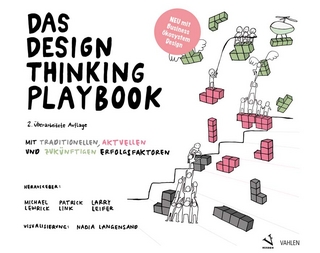
Vulkan 3D Graphics Rendering Cookbook
Packt Publishing Limited (Verlag)
978-1-80324-811-0 (ISBN)
Key Features
Learn to integrate modern rendering techniques into a 3D real-time rendering engine.
Leverage Vulkan 1.3 to render 3D content and understand modern real-time rendering methods.
Implement a glTF 2.0 PBR rendering pipeline from scratch with advanced PBR extensions.
Book DescriptionThis cookbook offers a practical guide to implementing many modern rendering techniques using Vulkan 1.3.
This updated edition starts by setting up your development environment and quickly transitions to building a robust 3D rendering engine using self-contained recipes. Each recipe helps you incrementally enhance your codebase, integrating a variety of 3D rendering techniques and algorithms into a cohesive project. You will master core techniques such as physically based rendering, image-based rendering, and GPU-driven rendering.
As you progress, the book delves into advanced topics, including glTF animations, screen-space rendering techniques, and optimization strategies. You will learn how to use advanced PBR extensions, and handle complex geometry data, ensuring your rendering engine is both powerful and versatile. These new additions empower you to create dynamic and realistic 3D graphics environments, fully utilizing Vulkan's capabilities.
By the end of this 3D rendering book, you'll have gained an improved understanding of best practices used in modern graphics APIs and be able to create fast and versatile 3D rendering frameworks.What you will learn
How to develop Vulkan applications
Organize Vulkan resources management
Manage a substantial amount of content in real-time 3D rendering engines
Profile and debug Vulkan applications effectively and efficiently
Create glTF 2.0 PBR rendering pipeline
Utilize advanced PBR extensions for superior visual quality
Combine different rendering techniques and optimizations
Handle and render large geometry datasets in real-time applications
Who this book is forThis book is meant for 3D graphics developers who already know the math behind 3D rendering and want to focus on building high-performance rendering engines with advanced Vulkan. It's perfect for those who are proficient in C++ and basic linear algebra, and have experience creating custom 3D applications without using premade rendering engines. This edition is especially helpful for developers looking to master the latest Vulkan features and modern rendering methods.
Sergey Kosarevsky is a former rendering lead at Ubisoft RedLynx. He currently leads Vulkan development at Meta. He worked in the AR/VR and mobile industries at DAQRI, TWNKLS, Blippar, Layer, Yandex, and SPB Software, where he designed and implemented custom real-time rendering technology. He has more than 20 years of software development experience and more than 14 years of mobile and embedded 3D graphics experience. In his Ph.D. thesis, Sergey employed computer vision to solve mechanical engineering problems. He has co-authored several books on mobile software development in C++. Alexey Medvedev is the AR Tech Lead at Meta, with over 20 years of experience in software development, primarily in game development. He has worked as an engine, graphics, and rendering engineer at renowned companies like Crytek, Blizzard, and Hangar 13, contributing to the release of several AAA games. At the time of writing this book, Alexey also serves as the Khronos Chair of the 3D Formats Working Group, which develops the glTF standards. Viktor Latypov is a software engineer and mathematician with experience in compiler development, device drivers, robotics, and high-performance computing and with a personal interest in 3D graphics and mobile technology. Surrounded by computers for more than 20 years, he enjoys every bit of developing and designing software for anything with a CPU inside. Viktor holds a PhD in applied mathematics from Saint-Petersburg State University.
Table of Contents
Establishing a Build Environment
Getting Started with Vulkan
Working with Vulkan objects
Working with Geometry Data
Adding User Interaction and Productivity Tools
Physically Based Rendering Using the glTF2 Shading Model
Graphics Rendering Pipeline
Advanced PBR extensions
Image-Based Techniques
Advanced Rendering Techniques and Optimizations
Implementing Physics
glTF Animations
| Erscheinungsdatum | 24.09.2024 |
|---|---|
| Verlagsort | Birmingham |
| Sprache | englisch |
| Maße | 191 x 235 mm |
| Themenwelt | Mathematik / Informatik ► Informatik ► Grafik / Design |
| Informatik ► Software Entwicklung ► User Interfaces (HCI) | |
| ISBN-10 | 1-80324-811-4 / 1803248114 |
| ISBN-13 | 978-1-80324-811-0 / 9781803248110 |
| Zustand | Neuware |
| Informationen gemäß Produktsicherheitsverordnung (GPSR) | |
| Haben Sie eine Frage zum Produkt? |
aus dem Bereich


